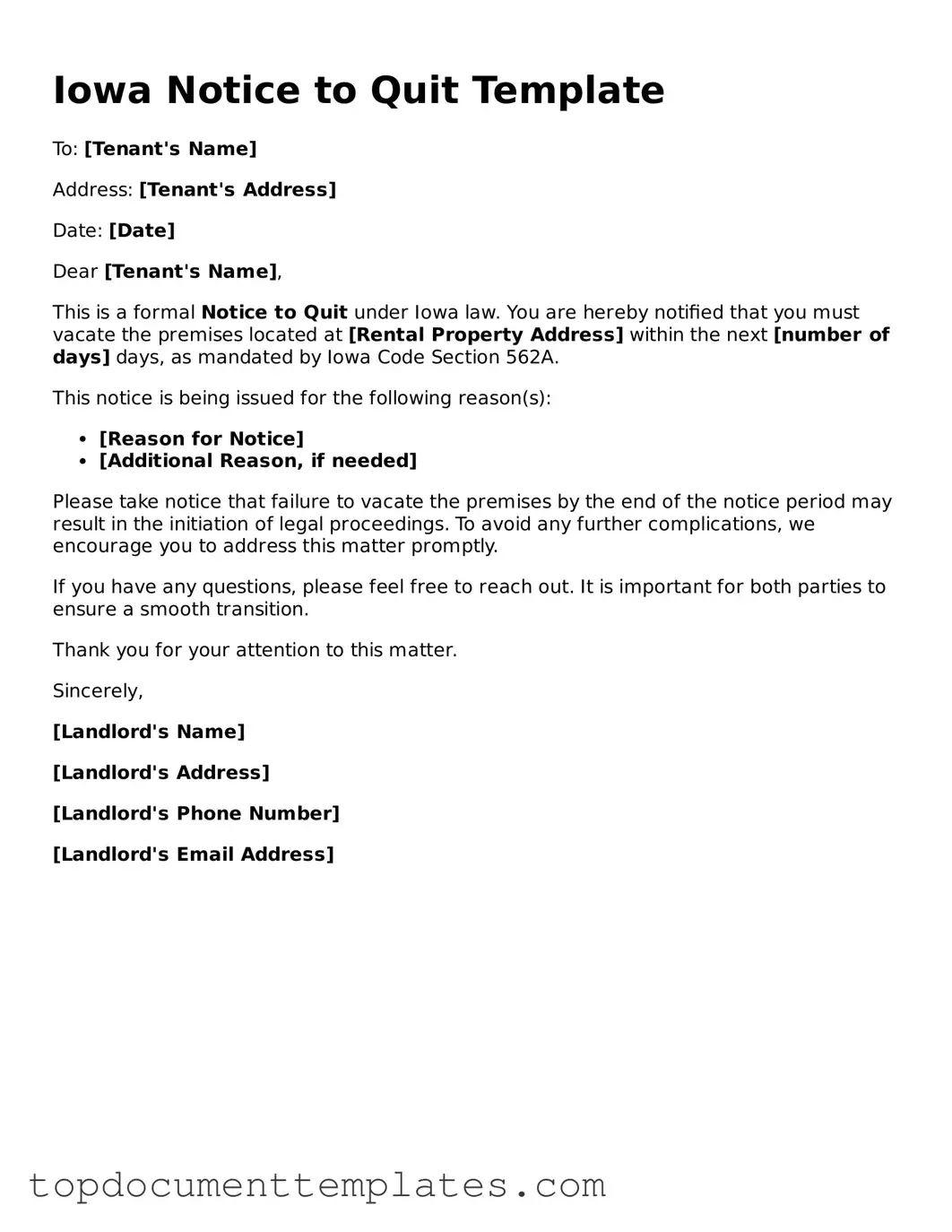Valid Notice to Quit Form for Iowa State
The Iowa Notice to Quit form serves as a formal notification from a landlord to a tenant, signaling the end of a lease agreement or the need to vacate a rental property. This essential document outlines the reasons for termination and provides a timeline for the tenant to respond or leave. Understanding this form is crucial for both landlords and tenants to ensure compliance with Iowa's rental laws.
Ready to take the next step? Fill out the form by clicking the button below!
Open This Form
